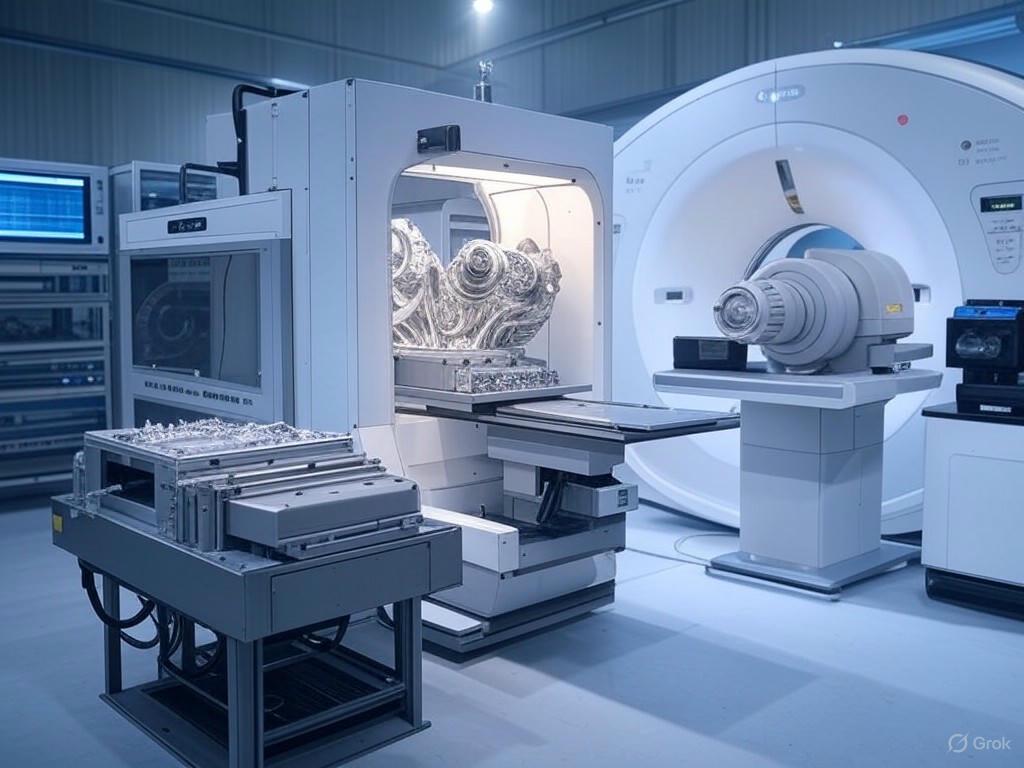In the realm of manufacturing, additive processes have ushered in a new era of possibilities, offering unprecedented flexibility in design and function. As industries race to harness these capabilities, the spotlight turns to a critical component of the production chain: metrology. The question of how to measure, evaluate, and ensure quality in complex, layered structures defines the cutting edge of this field.
Additive manufacturing (AM) technologies such as laser powder bed fusion and directed energy deposition allow for the creation of parts with intricate geometries and internal channels not possible with traditional methods. However, this freedom in design comes with unique challenges in quality assurance. Traditional tools like coordinate measuring machines (CMMs) often fall short in assessing the internal features of these complex parts.
Industrial computed tomography (CT) scanning has stepped in as a powerful tool, providing non-destructive inspection capabilities for both the outer and inner features of AM-produced components. Despite its potential, CT scanning faces limitations such as high costs and lengthy scan times. Advances in data processing are helping to mitigate these issues, making CT a viable solution for ensuring AM quality [1].
The grainy reality of additive parts also presents a challenge for optical metrology. The rougher surfaces and potential internal voids of printed parts can mislead traditional optical methods. Here, hybrid systems that blend tactile and optical measurements are creating new pathways for accurate inspection. Coupled with high-precision 3D scanning tools, these systems promise improved alignment and defect detection, even in warping and distortion scenarios common in AM [2].
In the realm of materials, the variability inherent in AM processes demands robust metrology solutions that can not only detect defects but predict their impact on performance. Ultrasonic testing and acoustic resonance techniques, along with emerging in-situ monitoring systems, are becoming indispensable tools in this quest for consistency.
However, the journey doesn't end at identifying defects. A holistic approach demands integrating the digital thread — a seamless flow of data from design through production to inspection. This connectivity ensures that all aspects of a part's life cycle are documented and traceable, paving the way for smarter, adaptive production environments. By embedding digital twin technology across the manufacturing chain, companies are beginning to predict real-world performance more accurately and refine future designs.
The intersection of AI and metrology represents the vanguard of future advancements. Machine learning algorithms, trained on vast datasets of scanning results and process parameters, are poised to automate defect detection and enhance the accuracy of inspections. This foresight enables proactive adjustments during the build process, potentially correcting for anomalies in real-time.
As additive manufacturing continues to evolve, metrology stands as both a challenge and an opportunity. By adopting comprehensive measurement strategies, leveraging advanced technologies, and embracing digital integration, manufacturers can not only meet but exceed the stringent quality demands of modern industries.
References:
[2]: https://metrology.news/5M-Project-Call-Targets-Breakthroughs-in-Additive-Manufacturing-Inspection/
